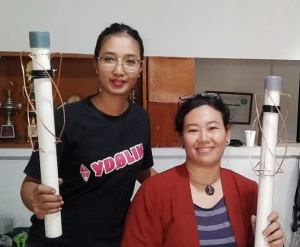AMSAT-India participated in Somaiya Space Conclave 2020
 Somaiya Space Conclave 2020 was organised by KJ Somaiya Institute of Engineering and Information Technology – Mumbai, India on Friday, February 28, 2020.
Somaiya Space Conclave 2020 was organised by KJ Somaiya Institute of Engineering and Information Technology – Mumbai, India on Friday, February 28, 2020.
Rajesh Vagadia VU2EXP reports:
It was a full day event covering topics related to Students Satellite program, Amateur Satellites, PS4 Orbiting Platform program, Design & Development of Nano Satellites etc.
AMSAT-INDIA was invited along with prominent speakers from ISRO & Satellite industries.
Myself Rajesh Vagadia VU2EXP, (Regional Coordinator for West India Zone) represented AMSAT-INDIA. I did introduced AMSAT-INDIA & it’s activities, along with Amateur Satellite Development scenario in India. I talked on HAMSAT, AISAT, role of ITU (API Submission), IARU (frequency allocation) etc procedure in brief for students satellite program. Some highlights were given on Satellite Ground station / Amateur Club station requirement. At last gave info on ARISS program & gave live Demo of SSTV over VHF which turnout as fun for all.
More than 60 curious Students including few budding team for Satellite program participated from different institutions and gained knowledge on various topics. Students from IIT Bombay shared their sensible experience on their Pratham satellite.
I am thankful to our AMSAT-INDIA Secretary Nitin Muttin VU3TYG for all technical support & Coordinating with organisers. I also thanks to Dr. Umesh Shinde, Mr. Rohit Bokade, Supriya Bhide, Siddharth & whole volunteer team for great cooperation & support.
It was remarkable event for all of us to gain & share knowledge, meet & discuss on single subject SATELLITES!
thanks & 73
Rajesh P. Vagadia VU2EXP
Regional Coordinator
West India Zone
AMSAT-INDIA
http://www.amsatindia.org/
m5aka
AMSAT-UK
Powered by WPeMatico







